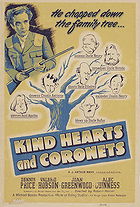Posted : 5 years, 7 months ago on 26 November 2019 02:16
(A review of
There’s a multitude of problems in adapting any of Stephen King’s sprawling novels into a film, or in this case series of films. The sheer scope of the material means that any adaptation that is not a multi-episode miniseries is a mere scratch of the surface in comparison, his inability to satisfactorily conclude his narratives, and that the first half of IT is always more interesting than the second. IT: Chapter One zeroed in on the Losers Club as preteens facing down the horrors of shape-shifting alien trying to eat them, and it functions as a large metaphor for the pains of growing up.
Chapter Two gives the adults the floor, and the more coke-fueled weirdness of King’s dense tome springs to the front during the adult section. Whether or not these tonal inconsistencies and sheer oddities of narrative mar or enhance the experience is up to the individual viewer. For me, Chapter Two was just a lot to take in, and I’m still not sure I’ve processed all of it or completely understand all its idiosyncratic choices.
We pick up the story 27 years later as the malevolent spirit, Pennywise the Dancing Clown (Bill Skarsgård, still playing the creature as alien impersonating humanity), reawakens and begins his reign of terror once more. This time, Pennywise emerges during a hate crime against a gay couple, the unlucky half being played by Xavier Dolan, but it isn’t long until kids start disappearing.
Our heroes join forces to return to their hometown, a place they’ve long since forgotten in a subplot that’s frustratingly underexplored about how Pennywise’s powers extend to memory manipulation outside of Derry and take down the murderous clown. Of course, we get flashbacks to the Losers Club as preteens as their memories return, and we’re treated to sight of de-aging technology used on teenagers to give them waxen, mask-like visages that are the most unsettling thing about the movie.
If I sound a bit snarkier about this entry than the first one, then it’s simply because this one is both better and worse than its predecessor. We have awkward moments like an adult Eddie (James Ransone) getting vomited on by the leper scored to “Angel of the Morning” or the adult Beverly (Jessica Chastain) getting attacked by a CGI monstrosity that’s giggle-worthy for how bad it looks. There’s also the kinda hilarious/kinda terrifying reveal of the adult Henry Bowers (Teach Grant) being chauffeured by the rotting corpse of his teenage friend, Patrick.
These moments are counterbalanced by scenes like adult Bill (James McAvoy) desperately trying (and failing) to save a young boy in a funhouse from becoming another casualty like Georgie. But this disparate tone problem underscores that IT: Chapter Two’s ambition and scope is nearly too large and encompassing to be successful. Individual moments are thrilling, terrifying, absorbing as often as others are eye-roll inducing or just plain awkward.
Still, the contours of the material are often smoothed over by a terrific ensemble of actors. Not only are McAvoy, Chastain, and Skarsgård reliably strong in their roles, but Bill Hader emerges as the film’s true MVP. Hader manages to dig deeper into Richie’s troubled psyche and conflicted feelings about his homosexuality in ways that the script and final product are perhaps too shy about exploring. While the other actors are playing types and doing so exceedingly well, Hader is crafting a recognizably real and honest person.
Not even these actors can entirely save the ending of IT, though. Yes, the spider-like reveal of Pennywise’s form is alluded to here, but without the celestial turtle. Instead, the Losers Club essentially bring about their own horcruxes and vanquish Pennywise with the power of friendship and love. Yeah, I had to do my best to stifle my guffaws that were just begging to escape. A film largely about going home again to reconcile with the past ends by stealing from the Harry Potter franchise.
 Login
Login
 Home
Home 95 Lists
95 Lists 1531 Reviews
1531 Reviews Collections
Collections
 0 comments,
0 comments, 







